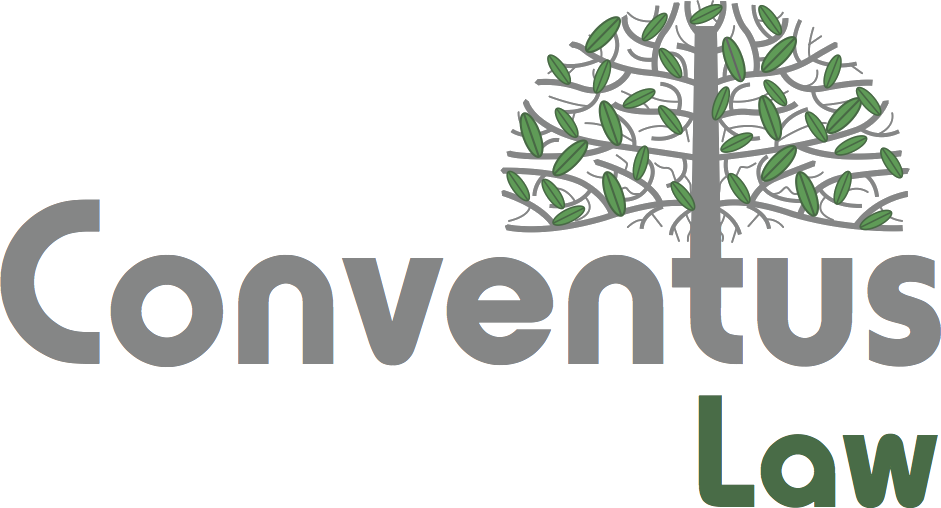Introduction
Mergers and Acquisitions (“M&A”) are pivotal strategies for businesses aiming to grow their market presence or diversify their operations. A key component of the M&A process is company valuation, which assesses the financial worth of a company or its assets involved in the transaction. This step is integral to due diligence, as it provides both parties with a clear understanding of the target company’s value, helping to identify strengths, weaknesses and potential synergies. Typically, both the acquirer and the target company engage in the valuation process—the acquirer seeks the lowest possible price, while the target company aims for the highest. Proper valuation plays a critical role in guiding buyers and sellers towards agreeing on a final transaction price for the assets or the company itself. For business owners, investors and legal practitioners, a solid grasp of valuation methodologies is essential to successfully navigate the complexities of M&A deals.
Process of M&A Valuation[1]
In M&A transactions, valuing a company involves several key steps as follows:
(a) Identifying and evaluating the potential target candidates thoroughly to ensure the transaction aligns with strategic goals.
(b) Analysing the target company’s historical performance to assess its financial suitability and understand its business model, operations and capital structure.
(c) Forecasting future performance through pro forma financial statements by considering the target company’s environment, risk analysis factors, revenue and cost drivers as well as realistic assumptions about its future operations and capital structure.
(d) Applying appropriate methods to estimate the target company’s value.
(e) Assessing the sensitivity of key assumptions used in the valuation process to understand their impact on the target company’s overall value.
Factors Considered in M&A Valuation[2]
(A) Financial Performance
The financial performance of a business, as reflected by its historical revenue, profit margins and cash flow stability, is a key measure of its value. Robust financial indicators suggest a reliable business model and greater prospects for future profitability. Critical metrics include consistent revenue growth, healthy profit margins and steady cash flow. A proven track record of financial stability can attract a higher valuation by minimising perceived risks for potential buyers.
(B) Market Conditions and Industry Position
Companies with a substantial market share, strong brand recognition and distinctive product offerings tend to be valued more highly due to the obstacles they pose for competitors and the loyalty of their customer base. Notable factors that enhance valuation include intellectual property, brand strength and a solid, long-standing customer base.
(C) Growth Potential
It is undeniable that purchasers are more willing to purchase a company with scalable business models and clear expansion opportunities. Growth potential may include geographic expansion, introduction of new product lines or the use of technology to enhance operational efficiency. A well-defined growth strategy can significantly increase a company’s appeal as an acquisition target.
(D) Risk Factors and Liabilities
A company’s valuation will be affected when the business has high debt levels, ongoing legal issues or negative market perception. Addressing and mitigating these risks prior to initiating the M&A process can make the business more attractive to buyers and improve its valuation.
(E) Operational Efficiency and Cost Structures
Operational efficiency is crucial to business valuation since it has a significant impact on profitability. Buyers evaluate a company’s ability to grow sustainably by looking at its cost structure, productivity and process efficiency. A high operational efficiency suggests that the company is well-positioned for sustainable growth and expansion with minimal restructuring as well as operating effectively in the competitive markets.
Types of Valuation Methods for M&A Transactions
Generally, there are three (3) types of M&A valuation methods which are the comparison approach, the book value approach and the income approach[3]. The choice of the right valuation method depends on the company’s industry, its characteristics and the expert analyst’s preference or expertise.[4]
(A) Comparison Approach
The comparison approach (also known as the market-based valuation approach) values a company based on the market prices of similar companies rather than speculative assumptions. This method includes comparable transactions where the company value is compared to similar businesses that have been recently bought or sold. Comparable Company Analysis (“CCA”) and Precedent Transactions Analysis (“PTA”) are both essential methodologies for comparing the financial ratios of similar companies to assess the business value.
There are differences in the applications and implications of the two (2) approaches. The focus of CCA is on current market multiples that represent continuing trade values in public markets and do not include a takeover premium. On the contrary, PTA involves a takeover premium and is based on previous M&A data which is vital for comprehending acquisition premiums but may not reflect the current market conditions.[5]
The choice between CCA and PTA depends on the valuation’s purpose and the availability of relevant data. CCA is more appropriate for established companies with standardised operations and relatively predictable financial outcomes. On the other hand, PTA is ideal for companies with frequent M&A activities in the recent past to ensure there is sufficient data on previous deals for comparisons.
In short, the comparison method is suitable for industries where there are other businesses with comparable transactions. In assessing whether it is a comparable transaction, the key similarities should be geography, size of the business and portfolio of services and products. Nonetheless, there is limited comparable real-world data for valuation and it is difficult to find exact comparable businesses. Since there are few direct competitors, this approach is unlikely to be applied to businesses operated by individuals or to pioneering businesses in hybrid markets.
(B) Book Value Approach
The book value approach is a valuation method that estimates the value of a company based on the costs required to replicate or replace its assets. The book value approach can also be referred to as the asset value based on summing up the business’s total assets and subtracting its liabilities. It provides a straightforward and practical way to estimate the worth of businesses with substantial physical assets, such as those in the manufacturing, real estate or infrastructure sectors.[6] Therefore, this method is frequently used to assess a controlling interest or when the company value is primarily derived from its assets and cash flow. One of the principal methods used under the book value approach is adjusted net asset value, which values the company by adjusting its assets and liabilities from its book value to arrive at a fair market value.[7]
Hence, this approach might not be ideal for service-based businesses that derive most of their value from intangible assets such as technology or intellectual property business. For instance, in a service-based business, it is challenging to determine an employee’s skill or ability objectively.[8] Moreover, another disadvantage is that this approach ignores the future income potential and fails to record intangible assets and market position, which may significantly influence the company’s overall valuation.
(C) Income Approach
Income approach which focuses on a company’s future income potential has been used in most instances to value a company.[9] This method is based on the principle that a company’s value equals the present value of its future cash flows. It uses the future cash flow of the target company to estimate its value. Therefore, this method is appropriate for target companies with stable cash flow and growth possibilities. Although there are many ways to implement the income approach, methods under the income approach are effectively based on discounting future amounts of cash flow to present value which is known as the Discounted Cash Flow (“DCF”).
The DCF approach requires assumptions and it involves three (3) basic elements, such as projected future cash flows, discount rate and terminal rate.[10] In order to predict a stable earnings stream, the expected cash flows are projected for as long as necessary, often three (3) to ten (10) years. Furthermore, a discount rate is applied to convert future cash flows into net present value as of the valuation date. While traditional investments generally involve risks similar to those the company is already accustomed to, M&A transactions require careful consideration of additional factors.[11] Key factors in deciding the discount rate are business risk, market and industry risk, capital structure and other relevant considerations.
The DCF approach emphasises future earning potential and long-term value. Due to its comprehensive nature, the DCF method is considered applicable and suitable for evaluating nearly every type of business.[12] However, projecting future cash flow carries some risks because it heavily relies on growth rates, market conditions and discount rates.
Conclusion
In conclusion, there is no universal valuation method that fits every M&A transaction. In Malaysia’s dynamic business environment, a suitable approach depends on factors such as the valuation’s purpose, the quality and availability of data, industry dynamics, market conditions and the expectations of the parties involved. Therefore, it is recommended to apply more than one (1) method to carry out the valuation and compare the outcomes to achieve a comprehensive understanding of the target company. Besides, the acquirer or valuer should consider the strengths and weaknesses of each method and adjust to align with M&A objectives. It is also advisable to seek professional advice from M&A valuation analysts and M&A legal practitioners to ensure a well-informed valuation process.[13] These experts can identify potential legal risks, offer valuable insights into market trends and ensure the valuation meets the objectives of the M&A.

For further information, please contact:
Muhammad Syazwan Sullman, Azmi & Associates
syazwan@azmilaw.com
- Barbara S. Petitt and Kenneth R. Ferris, ‘Valuation for Mergers and Acquisitions’ (2nd edn) (Pearson Education, 2013) pg11-12 <https://ptgmedia.pearsoncmg.com/images/9780133372670/samplepages/0133372677.pdf> accessed 15 February 2025.
- Jensen Capital Partners, ‘Key factors in valuing a business for Mergers and Acquisitions’ (Jensen, 20 November 2024) <https://www.jensencapitalpartners.com/key-factors-in-valuing-a-business-for-mergers-and-acquisitions/> accessed 15 February 2025.
- According to International Valuation Standards issued by the International Valuation Standards Council, United Kingdom, the three principal valuation methods may be applied to the valuation of businesses and business interests. These methods are also commonly used by valuers in M&A.
- Barbara S. Petitt and Kenneth R. Ferris, ‘Valuation for Mergers and Acquisitions (2nd edition) (Pearson Education, June 2013) pg12 <https://ptgmedia.pearsoncmg.com/images/9780133372670/samplepages/0133372677.pdf> accessed 15 February 2025.
- Speeda, ‘Comparable Company Analysis (CCA): A Simplified Guide to Understand and Conduct Strategic Business Planning’ (Speeda, 20 May 2024) <https://sea.ub-speeda.com/asean-insights/resource-center/comparable-company-analysis/> accessed 15 February 2025.
- Chris Walton, ‘11 M&A Valuation Methods & Why Your Narrative Matters’ (Eton Venture Services, 1 October 2024) <https://etonvs.com/ma/m-and-a-valuation-techniques/> accessed 16 February 2025.
- T. Eric Blocher, ‘Is it Time to Consider the Adjusted Net Asset Method for Your Next Business Valuation?’ (McKonly Asbury, 28 September 2022) <https://macpas.com/is-it-time-to-consider-the-adjusted-net-asset-method-for-your-next-business-valuation/> accessed 15 February 2025.
- Joseph Seitz, ‘M&A Valuation Methods to Determine a Company’s Worth’ (DFIN, 18 March 2022) <https://www.dfinsolutions.com/knowledge-hub/thought-leadership/knowledge-resources/ma-valuation-methods-determine-companys-worth> accessed 20 February 2025.
- T. Eric Blocher, ‘Is it Time to Consider the Adjusted Net Asset Method for Your Next Business Valuation?’ (McKonly Asbury, 28 September 2022) <https://macpas.com/is-it-time-to-consider-the-adjusted-net-asset-method-for-your-next-business-valuation/> accessed 20 February 2025.
- Mercer Capital, ‘Understand the Income Approach in a Business Valuation’ (Mercer Capital, n.d.) <https://mercercapital.com/article/understanding-the-income-approach-in-a-business-valuation/> accessed 24 February 2025.
- Professor Nurhan AYDIN, ‘Mergers and Acquisitions: A Review of Valuation Methods’ (2017) 8 International Journal of Business and Social Science 5, pg 149
- Chris Walton, ‘11 M&A Valuation Methods & Why Your Narrative Matters’ (Eton Venture Services, 1 October 2024) <https://etonvs.com/ma/m-and-a-valuation-techniques/> accessed 24 February 2025.
- Brian Dukes, ‘Everything About M&A Financing: Process, Types, Roles and More’ (Exit wise, n.d.) <https://exitwise.com/blog/m-a-financing> accessed 24 February 2025.




